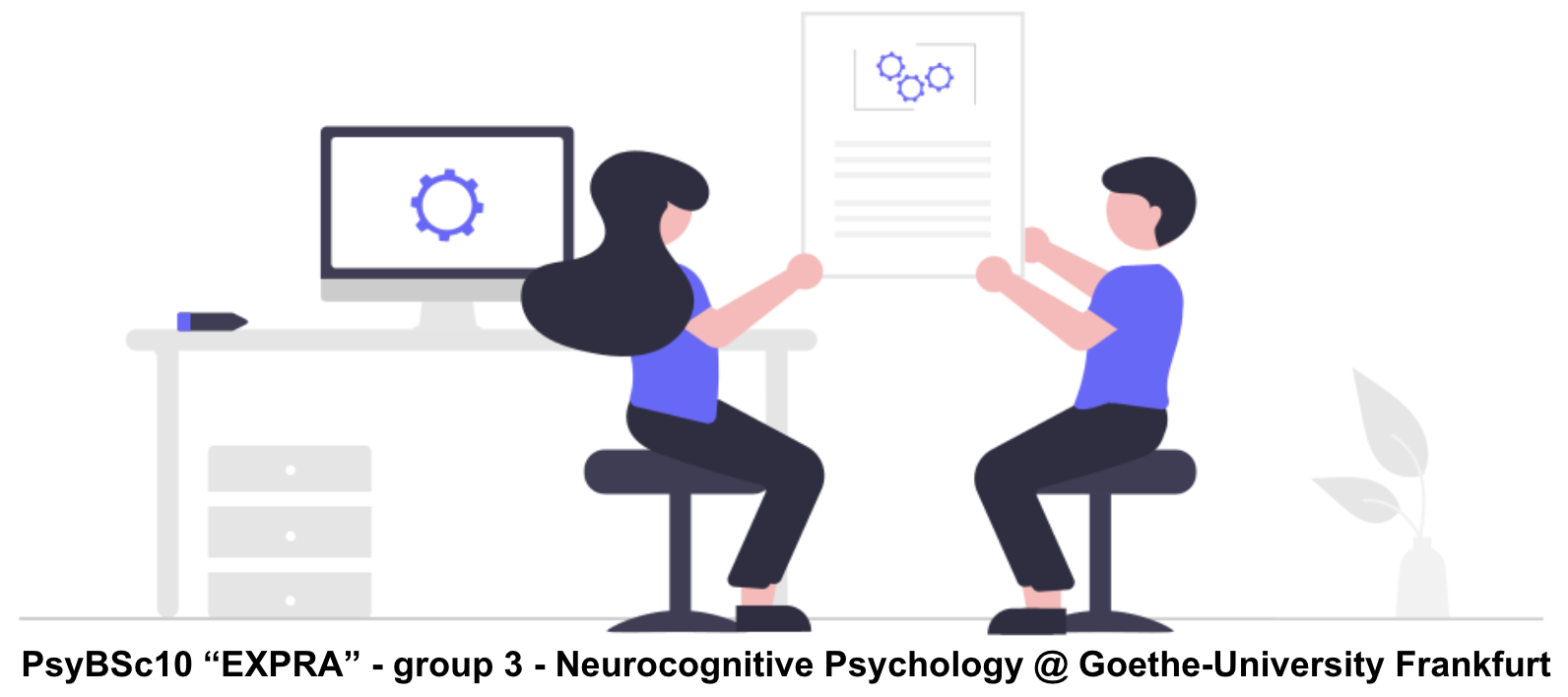Setup for the course
Contents
Setup for the course¶
There are a few things you need to get working on your machine in order to follow this course. However, don’t worry as it’s all gonna be open source, won’t require a lot of storage and will be explained in detail.
While same parts and section will be do-able via cloud computing, which is nice and easy to follow in an interactive manner, it’s not recommended as getting R & friends to work reliably on your machine is going to be very beneficial. This holds true for the course and especially beyond. Via installing these tools, you will be equipped to basically continue right away and start using them in your everyday research workflow. This even applies if you won’t continue with R and instead work with Python (of course also super cool), matlab (weeeeeeeell…) or what have you. Having that in mind and integrating other tools/resources focusing open and reproducible science, you will find a rather comprehensive set of install instructions below. While not all of them might be totally necessary for the course, they all will help you a great deal going further and are especially useful/needed if we have to hold the course virtually due to the COVID-19 pandemic.
Don’t worry, you got this!

https://media1.tenor.com/images/f72cb542d6b3e3c3421889e0a3d9628d/tenor.gif?itemid=4533805
General things¶
There are a few computing requirements for the course that are absolutely necessary (beyond the few software packages you should install, described below):
You must have administrator access to your computer (i.e., you must be able to install things yourself without requesting IT approval).
You must have at least 20 GB of free disk space on your computer (but more is recommended, just to be safe).
If you are using Windows you must be using Windows 10; Windows 7 and 8 will (most likely) not be sufficient for this course.
If you foresee any of these being a problem please reach out to one of the instructors for what steps you can take to ensure you are ready for the course start.
A note on resources for presenting & writing¶
While you’re free to use whatever type of software you want to do presentations and writing during the course, it is highly recommended to check and potentially go for the Google Docs Editors.
While this might seem strange at first it offers several tremendous benefits compared to comparable other “classic” software solutions like Microsoft office and LibreOffice: it’s a web application and thus works cross-platform, it saves your things in the cloud (no more wondering where files went, no more desperate attempts to restore lost files), it has a solution or writing/presenting/drawing/etc., it’s free (you also don’t need a Google account), it supports real-time collaboration with comments/suggestions, it has in-built version control (it keeps track of what was changed when by whom), it can read most other formats/allows to export to most other formats (including Microsoft). Additionally, it can be of great help regarding project organization and management and offers many integrations to other software and platforms (e.g. OSF).
However, the choice of software you use for these things won’t affect your grades, etc. as mentioned above as all deliverable need to be provided in formats supported by most software (e.g. open formats such as .csv or .json, as well as pdf for presentations and written submissions).
Required software¶
To get the most out of the course, we ask that you install the following software asap but latest after the first lecture:
A remote-capable text editor: VSCode
A literature & reference manager: Zotero
An instant messaging & meeting tool: Discord
If you already have all of the above software installed, you are all set!
The rest of this page provides more detail on installation procedures for each of the above elements, with separate instructions for each of the three major operating systems (Windows, Mac OS, and Linux).
Some quick general notes on instructions¶
There is no difference between
EnterandReturnin these instructions, so just press whatever the equivalent on your keyboard is whenever one is statedIf you already have some of these things installed on your computer that should (theoretically) be okay. However, pay close attention to the practicals and if you notice any differences in software behavior, obtained results, etc. check for potential version and/or
OSissues.
OS-specific installation instructions¶
Select the tab that corresponds to your operating system and follow the instructions therein.
R & RStudio
Please note: If you already have R & RStudio installed, please check that you have version 4.1.1 and if that’s not the case, upgrade your version following these instructions.
Download R from a given mirror, for example the one from Friedrich-Alexander-Universität Erlangen-Nürnberg (FAU) here via following these instructions.
Download RStudio from it’s download page using the Windows 10 version, run the downloaded
.exefile and follow the instructions on your screen.
VSCode
Go to https://code.visualstudio.com/ and click the download button, then run the
.exefile.Leave all the defaults during the installation with the following exception:
Please make sure the box labelled “Register Code as an editor for supported file types” is selected
VSCode extensions
Type
code .into the terminal and pressEnter. You should see a message reading “Installing VS Code Server” and then a new windows will open up.Press
Ctrl+Shift+Pin the new window that opens and type “Extensions: Install extensions” into the search bar that appears at the top of the screen. Select the appropriate entry from the dropdown menu that appears (there should be four entries; simply select the one that reads “Extensions: Install extensions”).A new panel should appear on the left-hand side of the screen with a search bar. Search for each of the following extensions and press
Installfor the first entry that appears. (The author listed for all of these extensions should be “Microsoft”, except for “R” related things.)R
R Debugger
Live Share (n.b., you may need to press “Ctrl/Cmd+Shift+P” and type “install extensions” again after installing this)
Live Share Extension Pack
Zotero
Go to https://www.zotero.org/ and click the “Log in” button followed by the “Register for a free account” button on the subsequent page.
Register for a free account via providing the necessary information. N.B.: Think about the email address you are using for the registration. While it might seem feasible/appropriate to use your university account, please remember that you won’t have access to it anymore after you finished your studies. Obviously, you could just change it when the time comes but you could also just use a different one right away (which might be less prone to problems anyway).
Download the Zotero Desktop App for windows from the Download page, run the downloaded
.exefile and follow the instructions on your screen.Open the
Zotero Desktop App, go toZotero->Preferences->Syncand log in with your user credentials.
Discord
Go to https://discord.com/ and download and install Discord. Please note, that you can also use Discord through your browser if you don’t want to download it. You will be invited to the course channel via e-mail.
Modern web browser
Install Firefox or Chrome. (Safari will also work.) Microsoft Edge is not modern, despite what Microsoft might try and otherwise tell you.
Integrations
A few of the tools you installed additionally nicely integrate with one another. It’s of course up to you to make use of that but it’s definitely recommended as it will ease up your (research/work/study) life quite a bit.
Go to https://www.zotero.org/download/ and install the connector for your respective browser. With that you can directly get
articles,books,blog posts, etc. and theirmeta-datafrom the web and added to yourzoterolibrary. Please note: theZotero Desktop Appneeds to be open for this to work.Make sure the
connectoralso added theZotero plug intogoogle docs, which should look like the following. Please note: theZotero Desktop Appneeds to be open for the plug in to work.


Other cool/interesting things
A Google Chrome Extension targeting citation transparency focusing gender imbalance. Going further, your
Zotero librarycan also be used to create a diversity statement which can be added to your written submissions. Find out more about it on Dani Bassett’s lab website.Grammarly: an AI powered cloud-based writing assistant that can help with typos, spelling, grammar, punctuation, clarity, engagement, and delivery mistakes. The basic version is free and integrates nicely with browsers and local apps.
GitKraken Glo Boards: create and track tasks for better project management.
Get a pomodoro app that helps you to stay focus, track your work and get things done. For some examples check this list.
R & RStudio
Please note: If you already have R & RStudio installed, please check that you have version 4.1.1 and if that’s not the case, upgrade your version following these instructions (assuming you use ubuntu).
Download R from a given mirror, for example the one from Friedrich-Alexander-Universität Erlangen-Nürnberg (FAU) selecting your
linux distributionhere via following the respective instructions (e.g. for ubuntu).Download RStudio from it’s download page using the respective
linux distributionyou are using (supported for Ubuntu/Debian 10, Fedora 19/Red Hat 7, Fedora 28/Red Hat 8, Debian 9 and OpenSUSE 15), run the downloaded file and follow the instructions on your screen.
VSCode
Go to https://code.visualstudio.com/ and click the download button, then run the
.exefile.Leave all the defaults during the installation with the following exception:
Please make sure the box labelled “Register Code as an editor for supported file types” is selected
VSCode extensions
Open the Visual Studio Code application.
Press
Ctrl+Shift+Pin the new window that opens and type “Extensions: Install extensions” into the search bar that appears at the top of the screen. Select the appropriate entry from the dropdown menu that appears (there should be four entries; simply select the one that reads “Extensions: Install extensions”).A new panel should appear on the left-hand side of the screen with a search bar. Search for each of the following extensions and press
Installfor the first entry that appears. (The author listed for all of these extensions should be “Microsoft”, except for “R” related things.)R
R Debugger
Live Share (n.b., you may need to press “Ctrl/Cmd+Shift+P” and type “install extensions” again after installing this)
Live Share Extension Pack
Zotero
Go to https://www.zotero.org/ and click the “Log in” button followed by the “Register for a free account” button on the subsequent page.
Register for a free account via providing the necessary information. N.B.: Think about the email address you are using for the registration. While it might seem feasible/appropriate to use your university account, please remember that you won’t have access to it anymore after you finished your studies. Obviously, you could just change it when the time comes but you could also just use a different one right away (which might be less prone to problems anyway).
Download the Zotero Desktop App for linux from the Download page, run the downloaded file and follow the instructions on your screen.
Open the
Zotero Desktop App, go toZotero->Preferences->Syncand log in with your user credentials.
Discord
Go to https://discord.com/ and download and install Discord. Please note, that you can also use Discord through your browser if you don’t want to download it. You will be invited to the course channel via e-mail.
Modern web browser
Install Firefox or Chrome. (Safari will also work.) Microsoft Edge is not modern, despite what Microsoft might try and otherwise tell you.
Integrations
A few of the tools you installed additionally nicely integrate with one another. It’s of course up to you to make use of that but it’s definitely recommended as it will ease up your (research/work/study) life quite a bit.
Go to https://www.zotero.org/download/ and install the connector for your respective browser. With that you can directly get
articles,books,blog posts, etc. and theirmeta-datafrom the web and added to yourzoterolibrary. Please note: theZotero Desktop Appneeds to be open for this to work.Make sure the
connectoralso added theZotero plug intogoogle docs, which should look like the following. Please note: theZotero Desktop Appneeds to be open for the plug in to work.


Other cool/interesting things
A Google Chrome Extension targeting citation transparency focusing gender imbalance. Going further, your
Zotero librarycan also be used to create a diversity statement which can be added to your written submissions. Find out more about it on Dani Bassett’s lab website.Grammarly: an AI powered cloud-based writing assistant that can help with typos, spelling, grammar, punctuation, clarity, engagement, and delivery mistakes. The basic version is free and integrates nicely with browsers and local apps.
GitKraken Glo Boards: create and track tasks for better project management.
Get a pomodoro app that helps you to stay focus, track your work and get things done. For some examples check this list.
R & RStudio
Please note: If you already have R & RStudio installed, please check that you have version 4.1.1 and if that’s not the case, upgrade your version following these instructions (assuming you use ubuntu).
Download R from a given mirror, for example the one from Friedrich-Alexander-Universität Erlangen-Nürnberg (FAU) selecting macOS and subsequently R-4.1.1.pkg, run the downloaded file and follow the instructions on your screen.
Download RStudio from it’s download page using the respective macOS installer, run the downloaded file and follow the instructions on your screen.
VSCode
Go to https://code.visualstudio.com/ and click the download button.
Unzip the downloaded file (e.g., VSCode-darwin-stable.zip) and moving the resulting Visual Studio Code file to your Applications directory.
VSCode extensions
Open the Visual Studio Code application.
Press
Cmd+Shift+Pin the new window that opens and type “Extensions: Install extensions” into the search bar that appears at the top of the screen. Select the appropriate entry from the dropdown menu that appears (there should be four entries; simply select the one that reads “Extensions: Install extensions”).A new panel should appear on the left-hand side of the screen with a search bar. Search for each of the following extensions and press
Installfor the first entry that appears. (The author listed for all of these extensions should be “Microsoft”, except for “R” related things.)R
R Debugger
Live Share (n.b., you may need to press “Ctrl/Cmd+Shift+P” and type “install extensions” again after installing this)
Live Share Extension Pack
Zotero
Go to https://www.zotero.org/ and click the “Log in” button followed by the “Register for a free account” button on the subsequent page.
Register for a free account via providing the necessary information. N.B.: Think about the email address you are using for the registration. While it might seem feasible/appropriate to use your university account, please remember that you won’t have access to it anymore after you finished your studies. Obviously, you could just change it when the time comes but you could also just use a different one right away (which might be less prone to problems anyway).
Download the Zotero Desktop App for macOS from the Download page, run the downloaded file and follow the instructions on your screen.
Open the
Zotero Desktop App, go toZotero->Preferences->Syncand log in with your user credentials.
Discord
Go to https://discord.com/ and download and install Discord. Please note, that you can also use Discord through your browser if you don’t want to download it. You will be invited to the course channel via e-mail.
Modern web browser
Install Firefox or Chrome. (Safari will also work.) Microsoft Edge is not modern, despite what Microsoft might try and otherwise tell you.
Integrations
A few of the tools you installed additionally nicely integrate with one another. It’s of course up to you to make use of that but it’s definitely recommended as it will ease up your (research/work/study) life quite a bit.
Go to https://www.zotero.org/download/ and install the connector for your respective browser. With that you can directly get
articles,books,blog posts, etc. and theirmeta-datafrom the web and added to yourzoterolibrary. Please note: theZotero Desktop Appneeds to be open for this to work.Make sure the
connectoralso added theZotero plug intogoogle docs, which should look like the following. Please note: theZotero Desktop Appneeds to be open for the plug in to work.


Other cool/interesting things
A Google Chrome Extension targeting citation transparency focusing gender imbalance. Going further, your
Zotero librarycan also be used to create a diversity statement which can be added to your written submissions. Find out more about it on Dani Bassett’s lab website.Grammarly: an AI powered cloud-based writing assistant that can help with typos, spelling, grammar, punctuation, clarity, engagement, and delivery mistakes. The basic version is free and integrates nicely with browsers and local apps.
GitKraken Glo Boards: create and track tasks for better project management.
Get a pomodoro app that helps you to stay focus, track your work and get things done. For some examples check this list.
Note: If the instructions aren’t working and you have spent more than 15-20 minutes troubleshooting on your own, reach out on the #help-installation channel on the Discord channel with the exact problems you’re having.
One of the instructors will try and get back to you quickly to help resolve the situation.
If they’re unable to help via Discord, you may be directed to attend one of the installation office hours.
Yeah, you did! Great job!

https://media1.tenor.com/images/d5ebabf248130ec3842ed3b8627fd4f2/tenor.gif?itemid=4770158
Getting the course content¶
Now that you have installed the required software (or not) to follow the course, it’s time to gather the respective materials.
As mentioned before: all materials, that is slides, links, readings, etc. will be either completely hosted here or linked to. Thus, the course website is the best address to find and get the course content. You can either use the schedule in the outline section or the ToC on the left to find and navigate through the sessions. Within each, the respective materials will be provided: slides as pdfs to download, R code as scripts or notebooks to download, links to reading and video materials, etc. .
Concerning certain R related things, you have two options: running things locally and in the cloud. The first is definitely recommended as you will need to conduct analyses yourself and also share your code and scripts in the end. Both options are explained further below.
By installing R on your system and setting up the appropriate environment, you will be able to open all the Jupyter Notebooks, R scripts, as well as R markdown files and go through the whole content of the course locally.
To get things up and running, please follow these steps:
Open RStudio.
Run the following code to get the required
R packages. Please note: you need a working internet connection to do so.install.packages("dplyr") install.packages("ggplot2") install.packages("esquisse") install.packages("tidyverse") install.packages("lubridate") install.packages("knitr") install.packages("dt") install.packages("rmarkdown") install.packages("janitor") install.packages("plotly") install.packages("rjson")Download the
scripts,Rmarkdown filesornotebooksof the respective sections via thedownload buttonon the top right or download the entire repository via this link) and unzip it to your preferred location, e.g.Desktop/EXPRA_Winter2021.Open RStudio and navigate to the respective folder(s) to access and open the files.
MyBinder.org is a great service that allows you to run Jupyter notebooks in a Docker or Python environment, directly online and for free. However, this service comes of course with a restricted computational environment (1-2GB of RAM). This means, many notebooks might be very slow and some might even crash, due to not enough memory.
You can use this approach to run and test most of the notebooks and to explore some of the slides. To access the MyBinder instance, use this link.
Enter the matrix¶
Once you reached this point, you should be ready the enter the matrix and follow the course in your preferred way. Congrats, fantastic work!

https://media1.tenor.com/images/e5c21d98f56c4af119b4e14b6a9df893/tenor.gif?itemid=4011236
